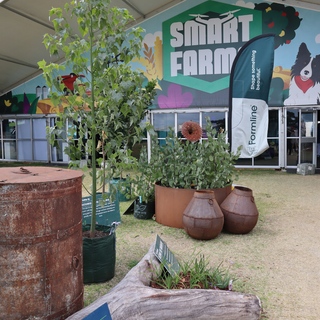News
-

How to Prevent Heat Stress in Trees and Plants
When we talk about heat stress in trees and plants, we're referring to the condition where high temperatures, often combined with intense sunlight, low humidity or insufficient water, begin to...
-

Building Fire-Resilient Landscapes
Over the weekend of 7–9 November, StrataGreen visited the Perth 4WD & Adventure Show, where the Forever Project and DFES showcased their inspiring Firewise Garden. This unique display demonstrated how...
-

Waterwise Urban Tree Planting: How TerraCottem Saves Water and Improves Tree Survival
Urban tree planting plays a vital role in building cooler, greener, and more resilient cities — but it also comes with challenges. Harsh conditions, compacted soils, limited root space, and...
-

Choosing the Right Herbicides for Combating Weeds
Weeds are more than just an eyesore they compete with plants for nutrients, water and sunlight, often threatening the health and productivity of landscapes, lawns, and agricultural sites. Selecting the...
-

Building a Firewise Future
At this year’s Royal Show, visitors had the chance to explore something truly inspiring — the Firewise Garden, created by The Forever Project in partnership with the Department of Fire...
-

Spring Lawn Care Checklist: From Weeds to Watering
As the frost fades and daylight stretches, spring is a vital time to set your lawn up for a season of lush, healthy growth. Good care now prevents problems later,...
-

Why Soil Preparation is key to a Healthy Spring Garden
As the grey shades of winter begin to fade and the first whispers of spring emerge, every enthusiastic gardener knows that success in the garden doesn't begin with planting, it...
-

TerraCottem SmartSoil Webinar
Join us for an in-depth session on TerraCottem SmartSoil® — the revolutionary soil conditioner designed to enhance water retention, nutrient availability, and plant establishment in even the most challenging growing conditions....
-

Retic Renovations Front Garden Makeover featuring Formline
Retic Renovations recently completed a front garden renovation featuring Formline Weathering Steel Landscape Edging supplied by Stratagreen. Along with upgrading the reticulation, they rebuilt the soil, restructured the irrigation system,...
-

Choosing the Right Landscape Edging Materials: A Guide for Landscapers
In professional landscaping, edging does more than define boundaries - it adds polish, improves maintenance outcomes, and elevates overall design. Whether you're working on a local council park, residential front...
-

Growing Together: StrataGreen Joins Trillion Trees for a Day of Planting
On Friday 11 July, the StrataGreen sales team got their hands dirty for a good cause, joining Trillion Trees Australia at Guildford Meadows for a Corporate Planting Day — and...
-

Tree Guards vs Tree Stakes: What’s the Difference and When to Use Each?
When it comes to supporting and protecting young trees, two commonly used tools are tree guards and tree stakes. While both serve important roles in the early stages of a...













